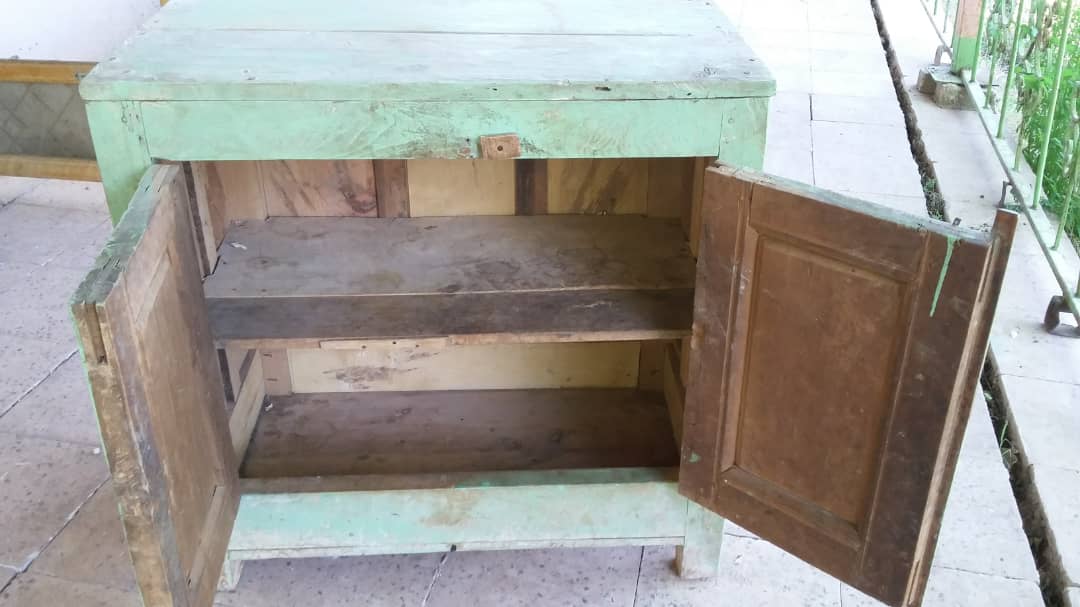If it was me, I'd dunk it in some paint stripper (or brush the stripper on) to rid it of that green color* then repaint it to match the room I was going to put it in. My Mother-in-Law would hang me for that, though, as she loves green of all shades, so that may not be your course of action.
If you're not going to strip it, a good dish-soap and water scrubbing may be all this needs to make it look as good as the day your gramps finished it. Use a sponge not a scrub pad unless there's a particularly stubborn area - the Scotch-Bright™ type scrub pads are likely to take the paint off, particularly if it's thin in places. Note you're not doing the dishes here - you don't need to soak down the wood, just get some warm, slightly soapy water, dunk the sponge, squeeze most of the water out, and gently rub the cabinet to get the gunk off. When it's clean, repeat with clear water to get rid of the soap, and pat it dry with paper towel or a shop towel, then let it sit out to dry. Soaking the wood is bad, lightly moistening it to lift the accumulated cruft is just fine.
Also, unless the "catch" piece of wood above the right-hand door is the way Grandpa originally built the cabinet, I'd consider replacing that with a magnetic catch on the inside, just to clean up the look a bit.
Once you've refurbished it to your desired state, dust it regularly, give it a gentle soap and water bath as necessary, try not to knock into it with heavy, pointy things, and pass it along to the next generation when the time comes.
*As noted by jdv in the comments, do be aware that there may be lead in that paint if it was applied before 1970 (or so) in the US. It was roughly that time-frame when lead was banned from paint. If you use a chemical paint stripper, you shouldn't have to be particularly concerned about it - the lead will remain in the liquid/gel and be disposed of when you throw it out. If you use a mechanical method (sanding, scraping) to remove the paint, you'll kick some/a lot of it in the air (especially sanding) and make small particles. These are the ones that are dangerous, so some common sense precautions are applicable.

